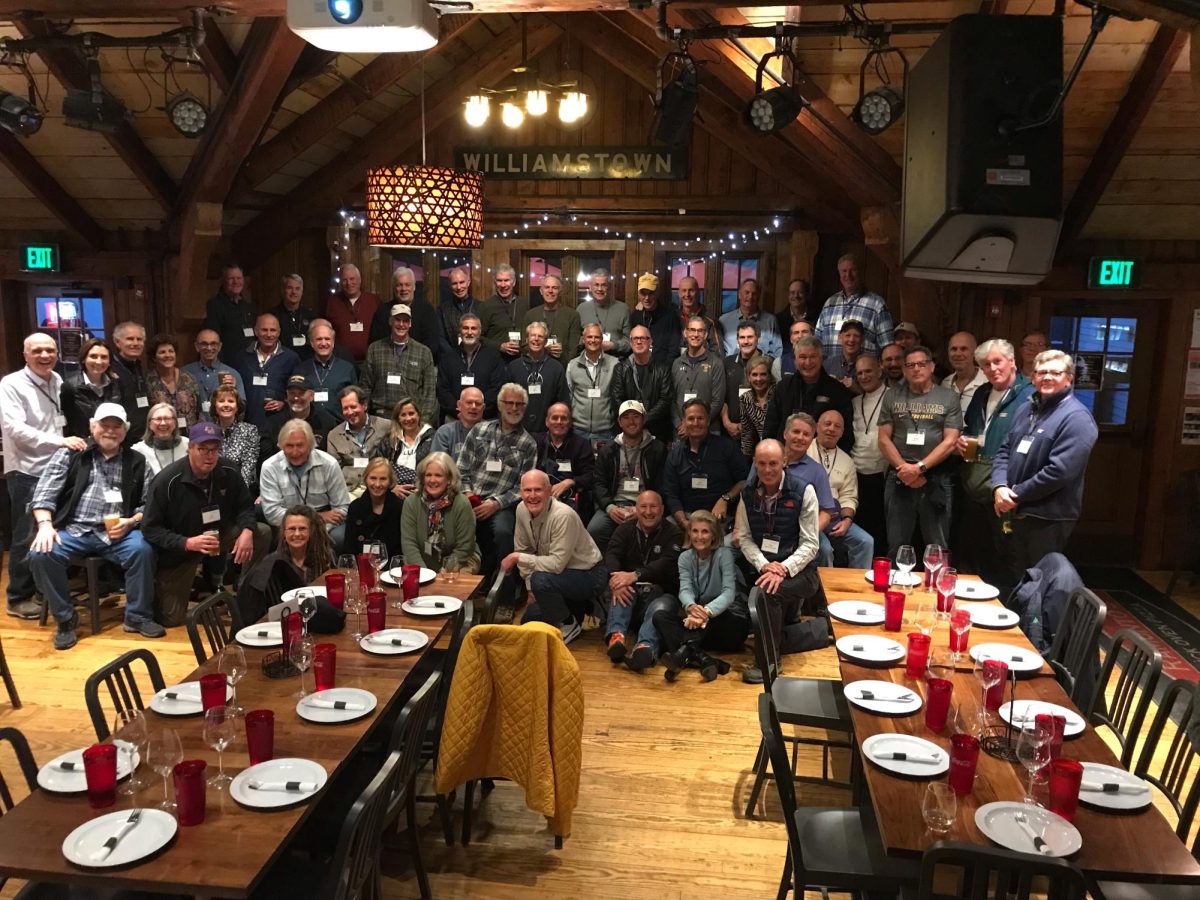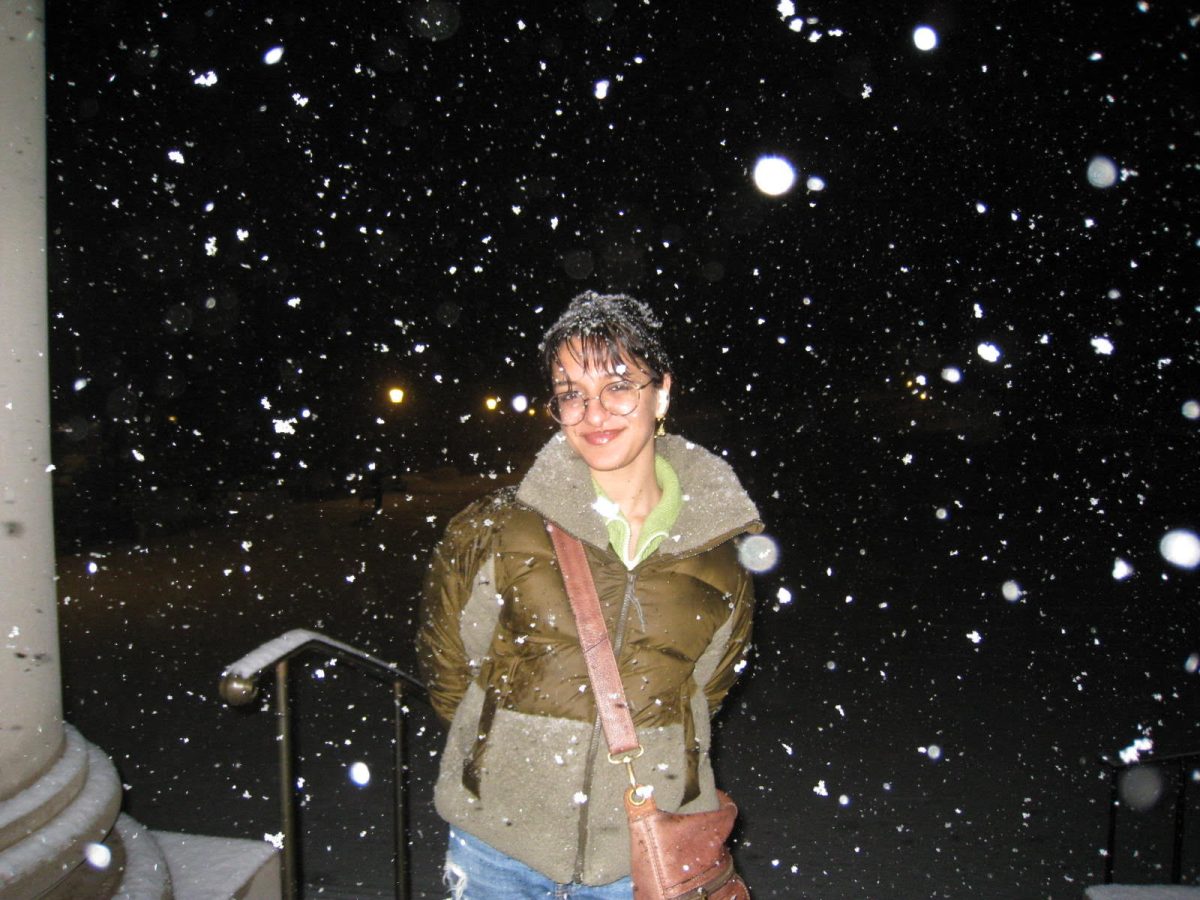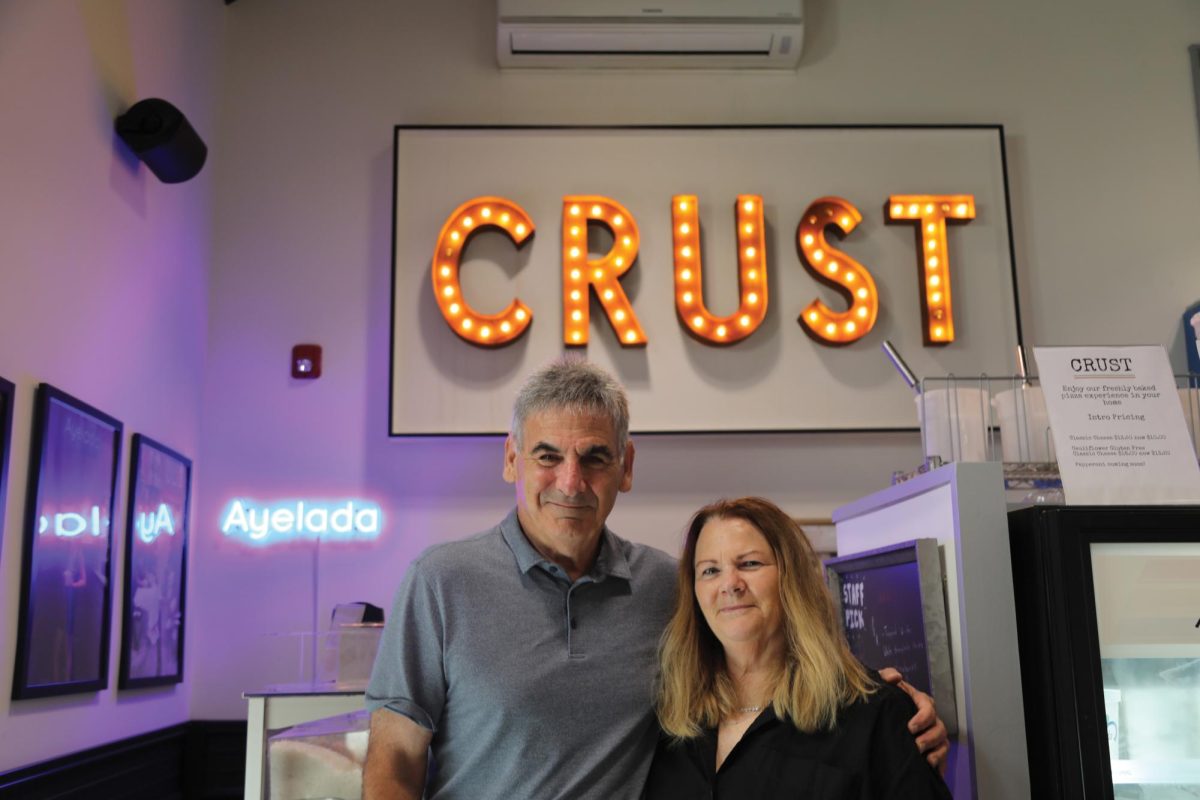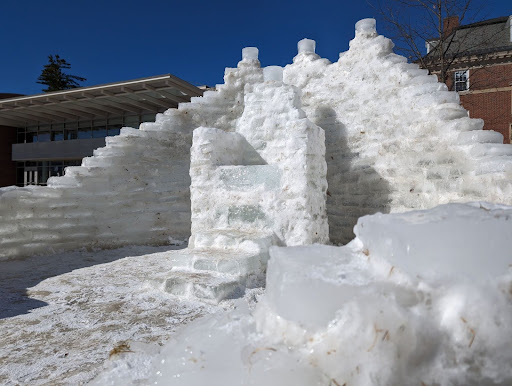
Though once a fixture of Winter Carnival, ice sculptures have been notably absent from the weekend’s festivities in recent years. This year, the tradition made a triumphant return.
When weather conditions in the Berkshires were more reliably frigid and snowy in February, the sculptures were a commonplace of the festival: In early years, residence houses would compete to create elaborate statues inspired by the carnival’s theme for the year. From 2008 to 2020, a member of Dining Services experienced in ice carving would shape large blocks of ice with the help of student assistants, though the tradition was ended with the implementation of COVID-19 pandemic restrictions, Associate Director of the Williams Outing Club (WOC) Scott Lewis told the Record.
As the WOC Winter Carnival Committee planned this year’s weekend, ice sculptures were not strongly considered. “When we were looking at older Winter Carnivals, that wasn’t something that we latched onto, just because of the uncertainty of whether it’s going to be cold enough or whether there’s going to be snow,” said Sam Magid ’25.5, a WOC board and two-time Winter Carnival Committee member.
But Lewis had heard Syl Foisy ’24 possessed winter sculpting abilities, and he mentioned to Magid that he should ask if Foisy would lend his talents to lead the charge in constructing an ice sculpture. A few days later, Foisy responded, detailing an elaborate proposal to bring his vision for a 5,000-pound ice sculpture to life.
“I think it’s the craziest email I’ve ever gotten,” Magid said.
While Foisy is no stranger to winter construction projects — he got on Lewis’s radar after building an 18-foot snowman in Currier Quad two winters ago — this task was his first foray into sculpting with ice. Pulling it off required careful planning, Foisy told the Record.
“It was kind of a logistical nightmare,” he said. “It was really hard to come up with a concrete plan for what we were going to make because it was weather dependent.”
Foisy reached out to Assistant Professor of Geosciences Alice Bradley, whose research specializes in coastal sea ice, and together they used freezers in Wachenheim to test how long it would take for ice blocks to freeze.
Foisy purchased 300 cardboard boxes, each slightly larger than the size of a brick, which he lined with plastic trash bags taken from a residence hall to prevent leakage. Through his and Bradley’s experimentation, they found that it would take roughly 40 hours to freeze a block of that size, given the outdoor temperatures in the week leading up to Winter Carnival. The plan was contingent on adding a few pieces of ice, which they purchased from a grocery store, to each block to speed up freezing.
Once Foisy was confident about the freezing process, Timothy Roberts, manager of horticulture and grounds, helped Foisy find a space — the hill between the Zilkha Center and Sawyer Library — and a hose to start filling boxes with water. Forty hours later, once all 300 boxes were solid ice, Foisy and a group of friends he recruited carefully removed the ice blocks from their liners and repeated the process.
While the second batch of ice blocks were freezing on the Saturday of Winter Carnival, Foisy got to work on the sculpture’s assembly. Though he had drawn some rough sketches of the design, it was largely up to the team — roughly 25 students who stopped by the construction site in front of Chapin Hall, some for hours at a time — to decide how the final product would look.
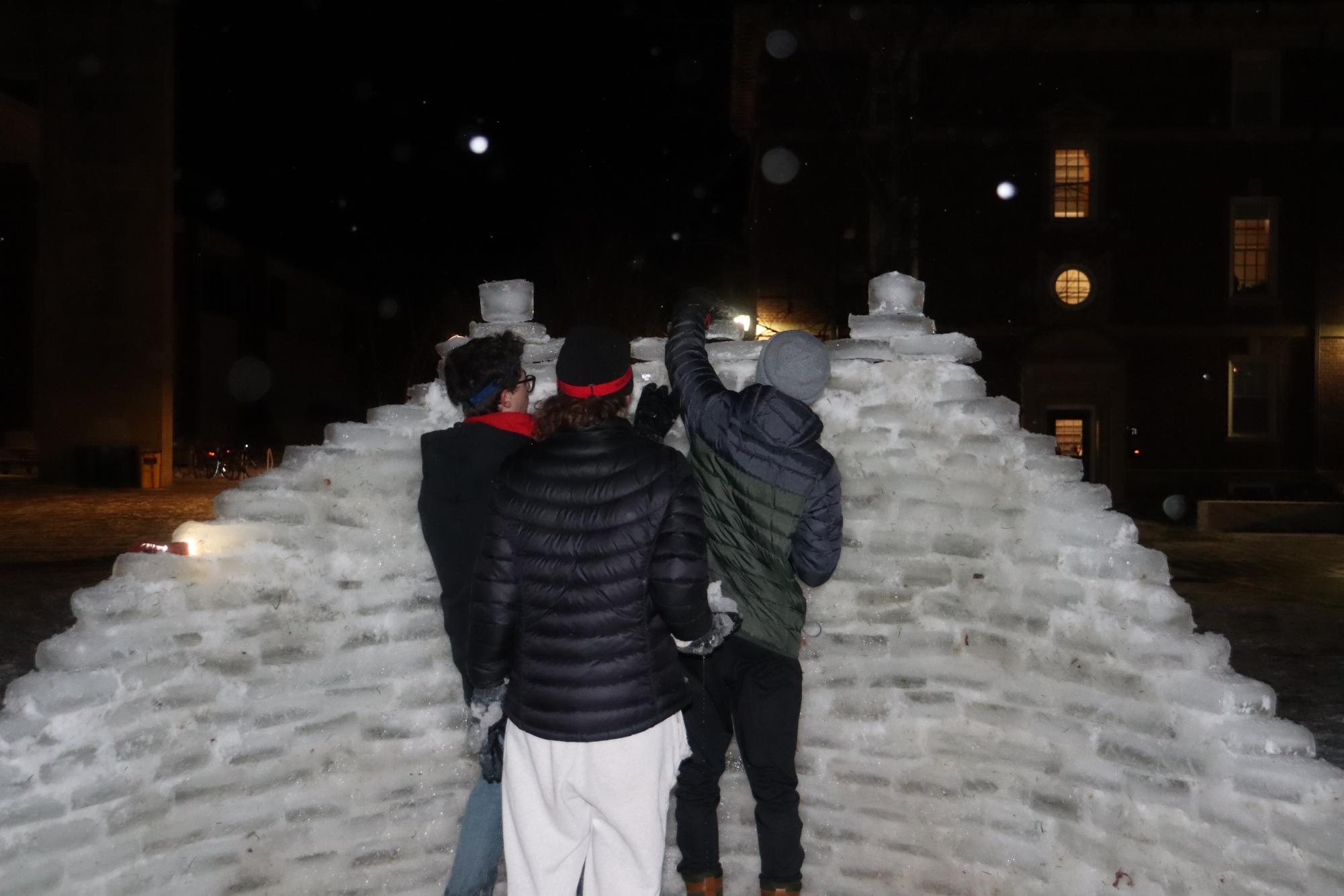
“I knew the general shape would be a circular backdrop with a seat in the middle,” Foisy said. “Then it was very much an improvisation once we got going.”
The assembly team also had to transport the ice blocks, including larger pieces for the throne, which spent over a week solidifying in a Wachenheim freezer and required eight students to move across campus early Sunday morning. Once the ice blocks were assembled, students created a slush cement by mixing some of the snow that had coated the lawn in front of Chapin with buckets of water filled in Frosh Quad showers. The team began their assembly around 1 p.m. on Saturday, Feb. 17, and put the finishing touches on their masterpiece at noon on Sunday.
“It had so many moving pieces, so it was really cool to see it come together,” Foisy said. “I was telling people along the way that there was probably a 20-percent chance it was going to work.”
Though the process was tedious — amounting to 100 hours of cumulative work, Foisy estimated — he said his main takeaway was the community that could be built through the shared project.
“Every single block was created under conversation — as the water was being poured, everyone was exchanging experiences at Williams,” he said. “I think that’s the spirit of Winter Carnival.”




